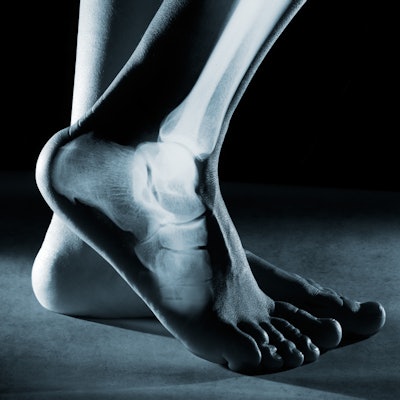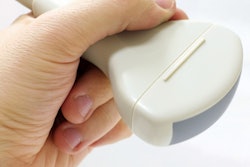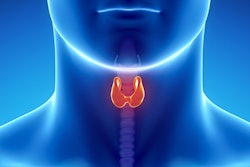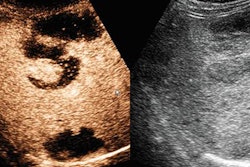
Ultrasound of the calcaneus, or heel bone, produced results equal to data gathered by dual-energy x-ray absorptiometry (DEXA) for assessing bone health, according to a study published online February 25 in the Journal of the American Osteopathic Association.
The study suggests that ultrasound could offer a less expensive method of screening for osteoporosis -- and perhaps even boost screening compliance for a wider range of patients at risk of bone disease -- wrote a team led by Carolyn Komar, PhD, of the West Virginia School of Osteopathic Medicine in Lewisburg.
"Ultrasonography of the calcaneus offers a low-cost, efficient means to screen bone health," the group wrote. "The affordability and mobility of an ultrasound machine enable its use as a screening method that may be applicable to large numbers of people."
Bone mineral density (BMD) is a measure of bone health, and peak levels are established in a person's mid-to-late 20s. Density decreases with age, and DEXA has long been considered the gold standard for assessing BMD: In fact, it remains the best option for thorough assessment of a patient's bone health, according to the group. But the equipment is expensive and stationary, and it exposes patients to radiation.
Komar and colleagues compared ultrasound with DEXA in a study that included 99 patients who underwent a DEXA exam between June 2015 and June 2016. All participants then underwent ultrasound imaging of both the right and left heel bone.
A DEXA bone mineral density score of the spine (i.e., T score) of less than -1.0 was considered poor, and a score of -1.0 or more was considered good, the researchers noted. The group recorded ultrasound T scores for both the right and left foot, then compared these values with results from the DEXA exam.
"The ultrasound bone mineral density T score was chosen as the evaluator of bone health because the diagnosis of osteoporosis is determined by a DEXA bone mineral density T score and would therefore be recognized by physicians," the researchers wrote.
Komar's team found that ultrasound of either heel was predictive of good or poor bone quality, with no differences found between scans of the left and right foot. The cutoff for the ultrasound BMD T score to predict good versus poor bone quality was -1.30 for the left foot and -1.05 for the right foot, in line with the accepted DEXA BMD score.
"Using ultrasound to scan the heel won't give us all the information we could gather with a full [DEXA] scan," Komar said in a statement released by the university. "However, it gives us a clear enough snapshot to know whether we should be concerned for the patient."




















